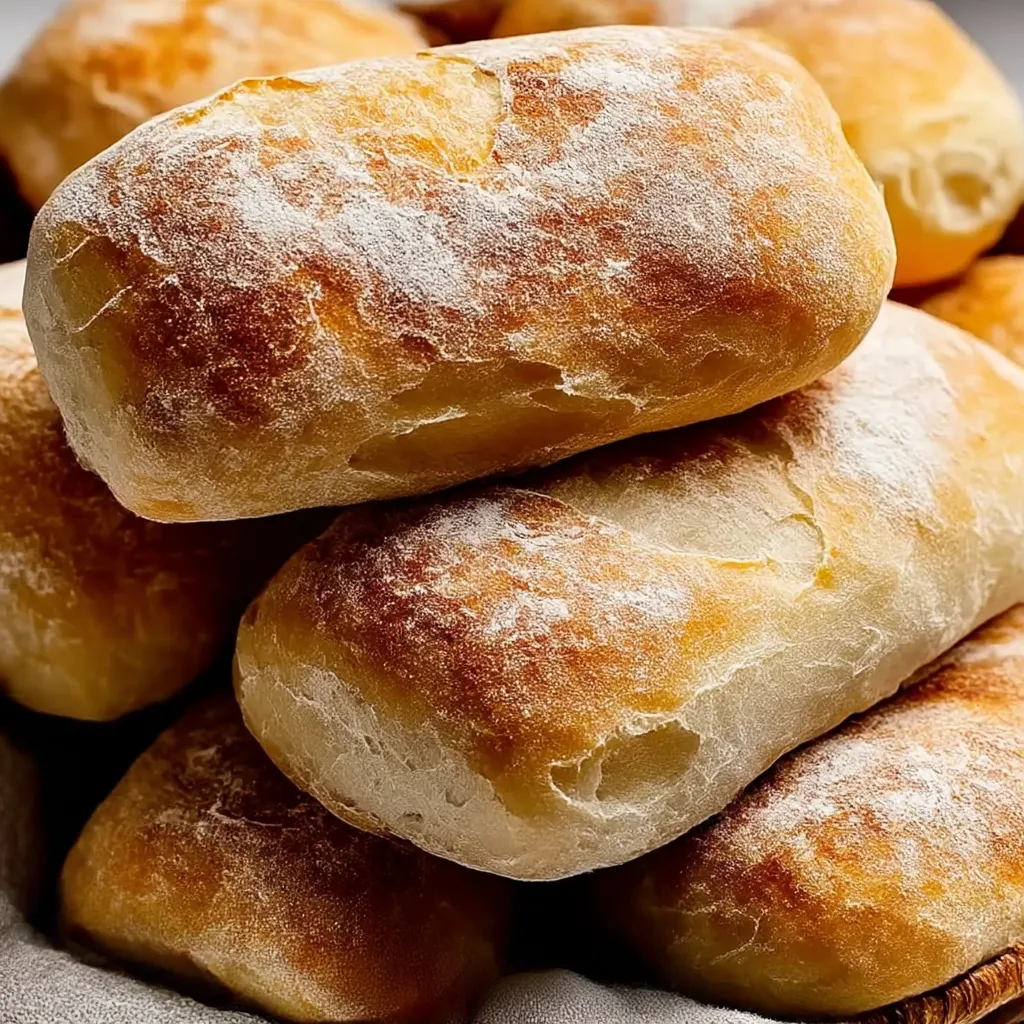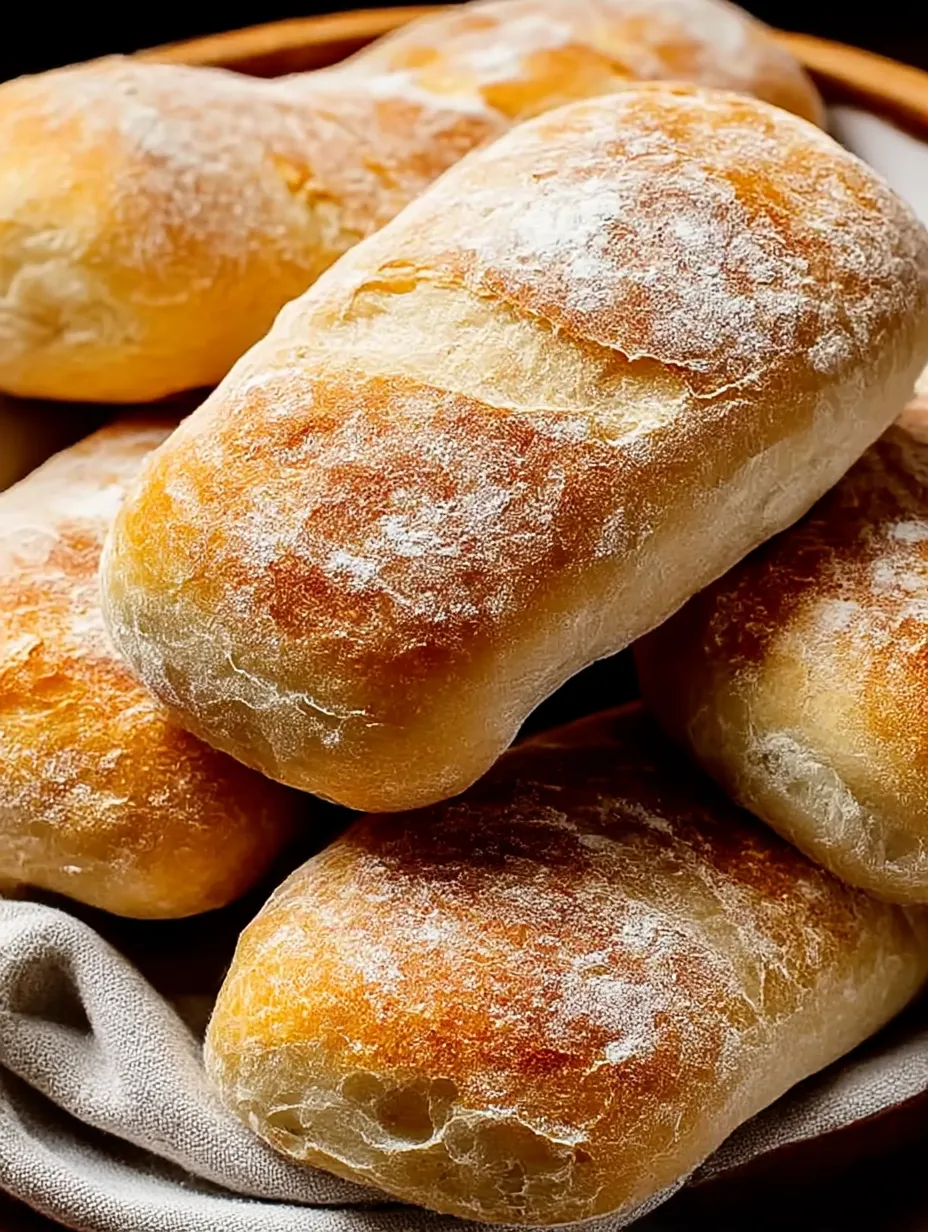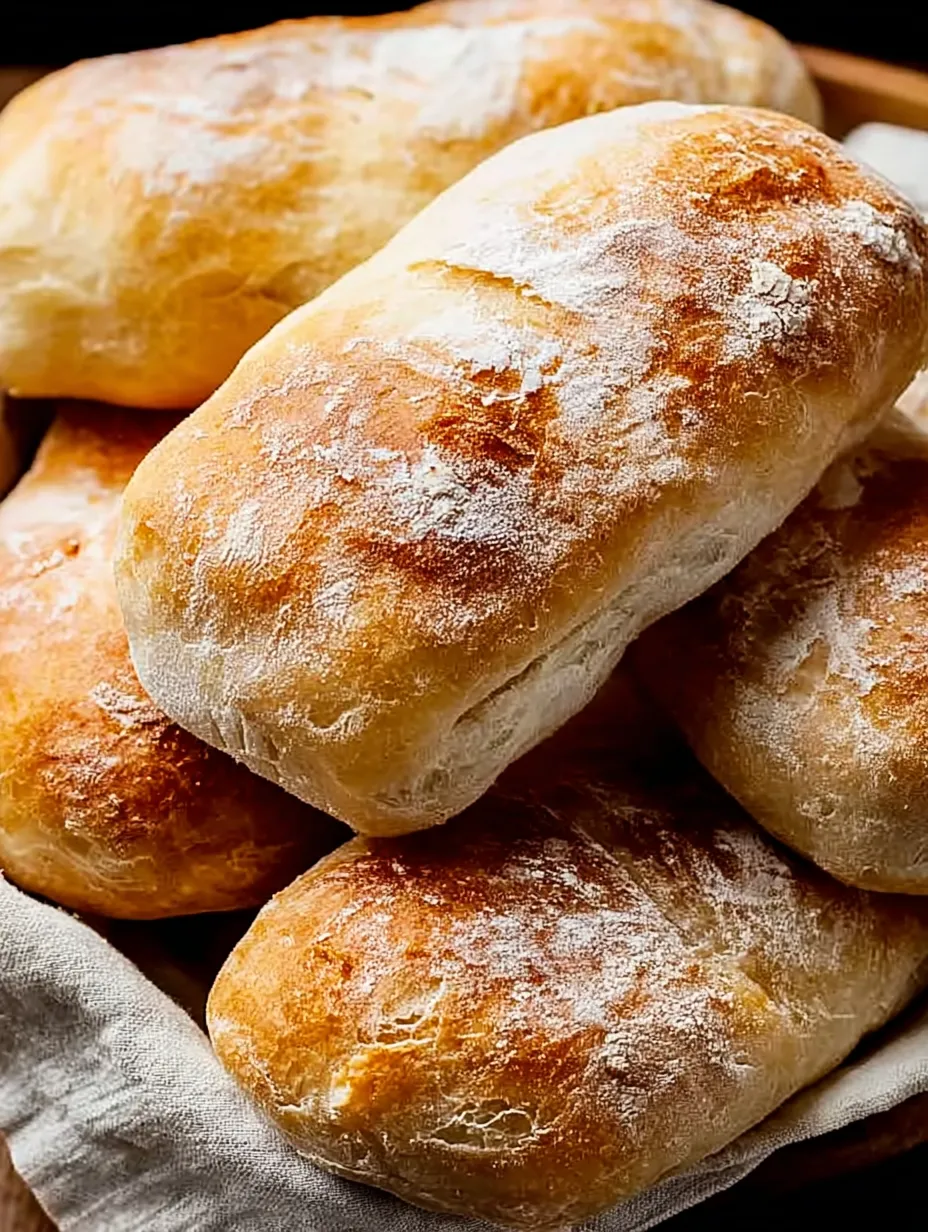 Pin it
Pin it
This airy Italian staple has a crispy outer shell and a super fluffy middle. You'll love how simple it is to whip up at home. Imagine pulling apart a warm loaf—great for dunking in olive oil, stacking with sandwich toppings, or just tearing off a chunk to munch. The smell alone turns your kitchen into a bakery, and it's always more fun to share with folks you care about.
Whenever ciabatta bakes in my oven, my whole family gets pumped. That smell brings us back to slow weekend meals and fun get-togethers. Oddly enough, it's super low-effort to make!
Dreamy Ingredients
- Active dry yeast: helps your dough puff up with giant air pockets. Make sure yours is alive by testing it in water if you're not sure it's fresh
- Salt: boosts the flavor and keeps the yeast in check. Go for sea salt if you want a cleaner taste
- All purpose flour: brings structure and keeps things a bit fluffy. Unbleached works best for that rustic vibe
- Olive oil: sneaks in a mellow richness. Try swirling a little on top right before it bakes for something extra
- Warm water: wakes up the yeast and gives you that soft inside. You want it to feel just a touch warmer than your hand
Simple Step by Step
- Bake the Bread:
- Crank the oven to 450. Pop a tray of water on the bottom rack (steamy air gives you serious crunch outside). Brush your loaves with olive oil and add a sprinkle of sea salt. Bake twenty-five to thirty minutes—when they're golden and sound hollow after a knock, they're done
- Second Rise:
- Dust your shaped loaves with flour and gently fit a damp towel on top. Let them hang out another hour. This helps build all those awesome bubbles inside
- Shape the Loaves:
- Turn your puffy dough onto a floured spot and cut it in half. Pat each piece into a rectangle (keep them airy and don't squish too much)
- First Rise:
- Drop the sticky dough into a bowl that's been oiled lightly. Cover it with a damp towel and let it rest in the warmest nook you can find. A two hour chill lets the flavors grow and the dough double up
- Knead until Smooth:
- Put the dough on a flour-dusted surface and knead hard for ten minutes. Stretch it, fold it, repeat. You want it smooth, bouncy, and stretchy—toss some flour on your hands if it's too clingy
- Add Water and Stir:
- Trickle your warm water into the flour/yeast mix as you stir like crazy. Don't worry if it's a mess—sticky dough is what will give you those big holes inside later
- Mix the Dough:
- Start by grabbing a big bowl and tossing in all the flour plus yeast. Stir with a wooden spoon so every bit of yeast blends in before any water gets involved
 Pin it
Pin it
I always look forward to pouring olive oil over my warm bread. It seeps into every crunchy crackle. My kids once ate most of the loaf before we even sat down—they just couldn't wait for it to cool.
Easy Storage
To keep ciabatta crisp and tender, stash it in a paper bag on the counter for a day or two max. For longer, slice first and pop in the freezer. You can toast slices straight out—super handy.
Swaps & Add-Ins
If you want it chewier, go for bread flour instead of all purpose. Instant yeast works—just toss it straight in with the dry stuff. Try swirling in a bit of honey for a light sweetness, or go wild with rosemary, sundried tomatoes, or black olives for an upgrade.
 Pin it
Pin it
How to Serve
This is top-tier for sandwiches—think salty meats, fresh mozzarella, and ripe tomato. It's my favorite anytime alongside a bowl of soup, salad, or dunked in good olive oil with a pinch of salt. Honestly, best of all is straight from the oven with melty butter.
Backstory
The word 'ciabatta' is Italian for slipper because the loaf looks long and flat. Bakers there came up with it in the 1980s—it was Italy's answer to French baguettes. All those airy bubbles make it awesome for panini or just passing around at the table.
Frequently Asked Questions
- → Why does ciabatta have those big holes in the bread?
It’s because the dough’s really wet and gets mixed softly. That helps big bubbles form, so the bread comes out airy with cool holes inside.
- → Is bread flour okay to use for this?
Yep, bread flour’s got extra protein. It makes your loaf chewier and even more open inside—perfect for this loaf.
- → How should you keep ciabatta fresh?
Best to pop it in a paper bag on your counter to save the crunch. If you’re not gonna eat it soon, freeze some slices and just heat them up later.
- → What helps get a crisp outside on ciabatta at home?
Crank your oven up high and make sure it’s hot before you bake. A drizzle of olive oil before baking can boost the crunch, too.
- → Can I mix in extras like herbs to make it different?
Of course! Toss in some chopped rosemary, olives, or sun-dried tomatoes if you want to try new flavors or smells.
